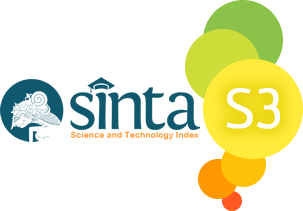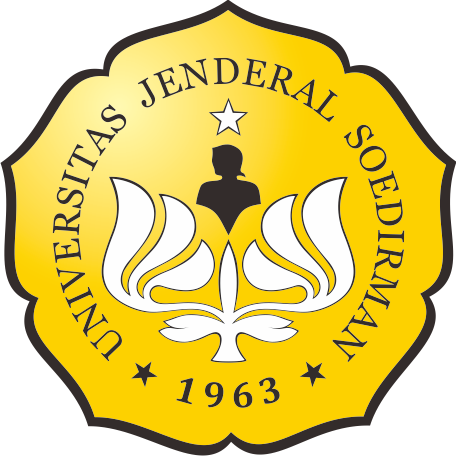DESKRIPSI KONDISI HABITAT SIAMANG, Symphalangus syndactylus, DI HUTAN LINDUNG REGISTER 28 PEMATANG NEBA KABUPATEN TANGGAMUS
Abstract
The Siamang, Symphalangus syndactylus, an arboreal black-furred gibbon member of the family Hylobatidae is listed as an endangered species by IUCN since 2008. The main threat to Siamang is the degraded habitat in term of quality and extent due to fragmentation. Protected forest Register 28 Pematang Neba located in Kabupaten Tanggamus is an example of the Siamang habitat threatened by the surrounding land conversion. This study aimed to determine the vegetation structure and profile of the Siamang habitat and to determine the diversity and abundance of plants the diet of Siamang. This study was a survey, and the observation was conducted from July to August 2017 applying three belt transect in the Protected Forest Register 28 Pematang Neba. The vegetation structure and profile of the Siamang habitat showed the distance between trees was more than 4 m that influence the Siamang activity in foraging, resting, and playing. The IVI showed a moderate category at the level of 130.813%, 135.948%, and 122.98% for habitat 1, 2, and 3 accordingly. The diversity index showed a moderate category at the level of 2.905 and 2.762 for habitat 1 and 2 respectively, and a high category for habitat 3 at the level of 3.066. The similarity index values among habitats were considered high (69-81%) allowing Siamang to migrate between habitats. The variety of Siamang diet was composed of leaves, fruits, and flowers.
Keywords
Full Text:
PDFReferences
Bangun TM, Mansjoer SS, Bismark M. 2009. Populasi dan habitat Ungko (Hylobates agilis) di Taman Nasional Batang Gadis, Sumatera Utara. Jurnal Primatologi Indonesia. 1:1410–5373.
Barbour GM, JK Burk, Pitts WD. 1987. Terrestrial plant ecology. New York: The Benyamin/Cummings Publishing Company, Inc.
Departemen Kehutanan. 1999. Undang-Undang Republik Indonesia Nomor 41 Tahun 1999 Tentang Kehutanan.
Desi, Linda R, Winarti I. 2017. Struktur dan profil vegetasi habitat kukang Kalimantan (Nycticebus menagensis) pelepasliaran yayasan IAR Indonesia di HL Gunung Tarak. Jurnal Protobiont. 6(1):1–9.
Erwin, Bintoro A, Rusita. 2017. Keragaman vegetasi di blok pemanfaatan hutan pendidikan konservasi terpadu (HPKT) Tahura Wan Abdul Rachman, Provinsi Lampung. Jurnal Sylva Lestari. 5(3):1–11.
Fachrul MF. 2007. Metode sampling bioekologi. Jakarta: Bumi Aksara.
Heyne K. 1987. Tumbuhan berguna Indonesia. Jilid I dan II. Terjemahan. Badan Litbang Kehutanan. Cetakan I. Koperasi Karyawan Departemen Kehutanan Jakarta Pusat.
Indriyanto. 2006. Ekologi hutan. Jakarta: Bumi Aksara.
Iskandar E. 2007. Habitat dan populasi owa Jawa (Hylobates moloch) di Taman Nasional Gunung Halimun-Salak, Jawa Barat [disertasi]. Sekolah Pascasarjana, Institut Pertanian Bogor. Bogor.
Kwatrina RT, Kuswanda W, Setyawati T. 2013. Sebaran dan kepadatan populasi siamang (Symphalangus syndactylus Raffles, 1821) di Kecamatan Dolok Sipirok dan sekitarnya, Sumatera Utara. Jurnal Penelitian Hutan dan Konservasi Alam. 10(1):81–91. https://doi.org/10.20886/jphka.2013.10.1.81-91
Larasati S [internet]. 2009. Mari kita mengenal primata: [diakses: 03 September 2016] dari http://wulanprimataloversblogspot. com.
Loveless AR. 1983. Prinsip-prinsip biologi tumbuhan untuk daerah tropik 2. Jakarta: Gramedia.
Mawazin, Subiakto A. 2013. Keanekaragaman dan komposisi jenis permudaan alam hutan rawa gambut bekas tebangan di Riau. Indonesian Forest Rehabilitation Journal. 1(1):59–73.
Geissmann T, Nijman V. 2006. Calling in wild silvery gibbons (Hylobates moloch) in Java, Indonesia: behavior, phylogeny, and conservation. Am J Primatol. 68(1):1–19. https://doi.org/10.1002/ajp.20203
Odum EP. 1971. Fundamentals of ecology. (Terjemahan Tjahjono Samingan. 1993. Ed. B. Srigandono. Dasar-dasar ekologi). Yogyakarta: Gadjah Mada University Press. 697 p.
Odum, E.P. 1996. Dasar-dasar ekologi (T. Samingan, Terjemahan). Yogyakarta: Gadjah Mada University Press.
Sari EM, Harianto SP. 2015. Studi kelompok siamang (Hylobates syndactylus) di Repong Damar Pahmungan pesisir barat. Jurnal Sylva Lestari. 3(3):85–94.
Sari IN, Nurdjali B, Erianto. 2014. Keanekaragaman jenis ampibi (ordo Anura) dalam kawasan HL Gunung Ambawang Kecamatan Kubu Kabupaten Kubu Raya. Jurnal Hutan Lestari. 2(1):116–125.
Setiadi D. 1998. Keterkaitan profil vegetasi sistem agroforestry kebun campur dengan lingkungannya. Disertasi. Bogor: Institut Pertanian Bogor, Program Pascasarjana, Jurusan Pengelolaan Sumber Daya Alam dan Lingkungan.
Smith RL. 1977. Element of ecology. New York: Harper & Row. Publisher.
Supriatna J, Wahyono EH. 2000. Panduan lapang primata Indonesia. Jakarta: Yayasan Obor.
Sutisna U. 1981. Komposisi jenis hutan bekas tebangan di Batulicin, Kalimantan Selatan. Deskripsi dan analisis Laporan 328. Bogor: Balai Penelitian Hutan.
Suyanto A, Sinaga MH, Saim A. 2009. Biodiversitas mamalia di Tesso Nilo, Propinsi Riau, Indonesia. Zoo Indonesia. 18(2):79-88.
Tiyawati A, Harianto SP, Widodo Y. 2016. Kajian perilaku dan analisis kandungan gizi pakan drop in siamang (Hylobates syndactylus) di Taman Agro Satwa dan Wisata Bumi Kedaton. Jurnal Sylva Lestari. 4(1):107–114.
Violita CY, Setiawan A, Rustiati EL. 2015. Ukuran kelompok simpai (Presbytis melalophos) di hutan Desa Cugung kesatuan pengelolaan hutan lindung model Gunung Rajabasa Lampung Selatan. Jurnal Sylva Lestari. 3(3):11–18.
Yudha DS, Eprilurahman R, Trijoko, Alawi MF, Tarekat A. 2014. Keanekaragaman jenis katak dan kodok (ordo Anura) di sepanjang Sungai Opak Propinsi Daerah Istimewa Yogyakarta. Jurnal Biologi.18(2):52–59.
Yuliana R. 2011. Analisis habitat siamang (Hylobathes syndactilus) di Repong Damar Pekon Pahmungan Kecamatan Pesisir Tengah Lampung Barat [skripsi]. Lampung: Universitas Lampung.
Zahra NL. 2016. Studi populasi siamang (Simphalangus Syndactilus) di HL Register 25 Pematang Tanggang [skripsi]. Jurusan Kehutanan Universitas Lampung. Lampung.
Article Reads
Total: 3249 Abstract: 2129 PDF: 1120Refbacks
- There are currently no refbacks.

This work is licensed under a Creative Commons Attribution-ShareAlike 4.0 International License.
This website is maintained by:
Bio Publisher
The Faculty of Biology Publishing
Faculty of Biology
Universitas Jenderal Soedirman
Jalan dr. Suparno 63 Grendeng
Purwokerto 53122
Telephone: +62-281-625865
Email: biologi@unsoed.ac.id
T his website uses:
OJS | Open Journal System
A free journal management and publishing system that has been developed by the PKP (Public Knowledge Project) version 2.4.8.0.
All article content metadata are registered to:
Crossref
An official nonprofit Registration Agency of the International Digital Object Identifier (DOI) Foundation.
Articles in this journal are indexed by:









